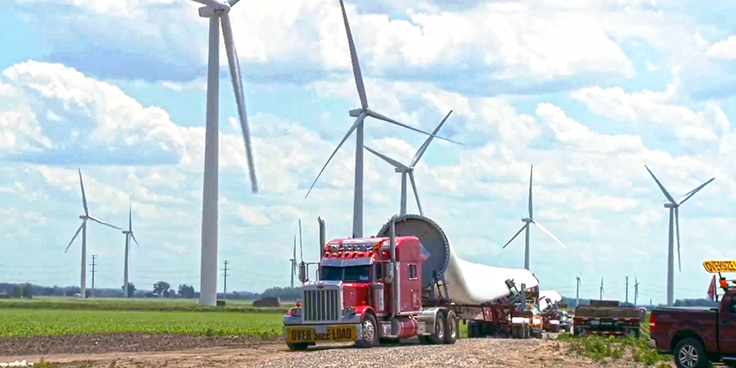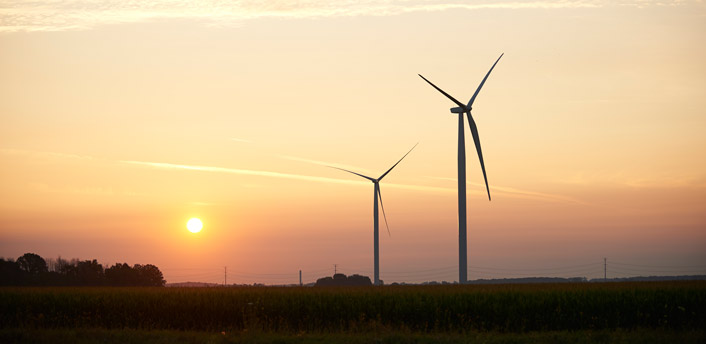Account & Billing
View or pay bill
Billing and Payment
Energy dashboard
Payment Plans & Assistance
Residential Rate Options
Start, Stop or Transfer Service
Account Details
Savings & Clean Energy
Save Money & Energy
Rebates & Discounts
Compare programs
Renewable Energy
Electric Vehicles
Energy Supply Plan
Online Store
Outages & Safety
Report an issue
Safety
Outage Credits
Scheduled Outages
Tree Maintenance
Cross Winds Frequently Asked Questions
Why is Consumers Energy planning on three phases of development in the Cross Winds Energy Park?
Consumers Energy first planned to build an additional 100 MW of wind capacity by 2022 to meet state requirements for renewable energy sources. This plan was included in Consumers Energy’s original Renewable Energy Plan. Since then, the construction of the original 100 MW addition has evolved into the Cross Winds Energy Park Phase II (44 MW) and Phase III (76 MW).
In total, the three phases of the Cross Winds Energy Park now produce up to 231 MW of capacity to help fulfill customers’ desire for additional alternative renewable technology options.
Future development was always planned for the Cross Winds Energy Park with various factors (including decreased technology costs, increased customer demand and energy policy) supporting the decision for expansion.
In total, the three phases of the Cross Winds Energy Park now produce up to 231 MW of capacity to help fulfill customers’ desire for additional alternative renewable technology options.
Future development was always planned for the Cross Winds Energy Park with various factors (including decreased technology costs, increased customer demand and energy policy) supporting the decision for expansion.
Why did Consumers Energy build the Cross Winds® Energy Park?
Consumers Energy built the Cross Winds Energy Park for two reasons – regulatory compliance and cost effectiveness.
- Regulatory Compliance: Consumers Energy made a commitment to double its renewable energy capacity from 5 percent to 10% in 2007 when it submitted its 25-year Balanced Energy Plan to the Michigan Public Service Commission for meeting the energy supply requirements of its customers. In 2008, Michigan passed a renewable energy standard requiring 10% of the state’s energy supply to come from renewable sources, such as wind, by the end of 2015. This continues to be a driver since Michigan now requires that 15% of the state’s energy come from renewable energy sources by 2021 (Public Act 342 of 2016). Now, Consumers Energy's Clean Energy Plan explains a path forward that exceeds the state requirements. Visit www.micleanenergyplan.com for more information.
- Cost Effectiveness: Consumers Energy decided to tap the state’s wind power to expand its renewable energy portfolio because it’s the most economical approach, and because it offers the most value to customers. We have also constructed and are operating the Lake Winds® Energy Park, a 100.8-MW project in Mason County and we have contracts to buy more than 300 MW of renewable energy capacity from third-party suppliers, the majority of which comes from wind. With the completion of Cross Winds Phase I, Consumers Energy met the 10% renewable energy standard one year before the state’s deadline.
What is a wind farm?
A wind farm is made up of clusters of wind turbines that capture and convert wind to electricity. Though it’s easy to imagine a wind farm in one location, turbines are generally spread over thousands of acres of land to maximize production by choosing the ideal locations based on factors such as wind speed and direction.
Why did Consumers Energy put a wind farm in Tuscola County?
After carefully studying 19 potential sites in Michigan, Consumers Energy chose Tuscola County due to the wind resource and because the area offers access to available transmission — a way to move the energy into the electric grid — a key consideration when building a wind farm. Within Tuscola County, a detailed wind analysis using data collected by meteorological towers was used to determine the optimal locations. That study showed Akron and Columbia Townships held the most potential for wind production.
Does the Cross Winds Energy Park project include or impact the Saginaw Bay?
The Cross Winds Energy Park site is based entirely on land. Consumers Energy located the wind turbines for this project in Akron and Columbia Townships.
How many wind turbines are placed in the Cross Winds Energy Park?
Phase I of the project includes 62 wind turbines – 43 in Akron Township and 19 in Columbia Township. Phase II includes 19 wind turbines located in Columbia Township and Phase III is designed to add another 33 wind turbines in Columbia Township. Consumers Energy secured more than 51,300 acres of easements in Tuscola County, but not all of the land was needed for wind turbine placement. A good portion of the land was needed to create an underground electric collection system and establish setback buffers to meet zoning requirements for operational factors such as sound and shadow flicker.
Will excessive sound or shadow flicker impact me or my family?
Consumers Energy conducted detailed sound and shadow flicker studies to ensure the proposed wind farm meets or exceeds the zoning requirements established by the townships where the project is located. Consumers Energy projects sound levels and shadow flicker from the turbines to be below applicable zoning limits. Shadow flicker is an effect that may, under certain conditions, be caused by the shadows of rotating wind turbine blades.
What about the health impact of living near wind turbines?
Wind energy is among the safest ways to generate electricity with the added benefit of no air or water emissions.
The American Wind Energy Association, in conjunction with the Canadian Wind Energy Association, completed a multi-disciplinary study in 2009 that concluded wind energy does not present a risk to human health. The State of Massachusetts and Health Canada, among others, have also performed their own studies.
The American Wind Energy Association, in conjunction with the Canadian Wind Energy Association, completed a multi-disciplinary study in 2009 that concluded wind energy does not present a risk to human health. The State of Massachusetts and Health Canada, among others, have also performed their own studies.
Will the area’s wildlife be impacted by placing the wind farm in Tuscola County?
Before constructing Cross Winds Energy Park’s Phase I, Consumers Energy undertook two years of wildlife studies based on recommendations from the U.S. Fish & Wildlife Service and the Michigan Department of Natural Resources when considering placement of a wind energy farm in the project area. These studies include avian studies which looked at the use of the area by short ear owls and bald eagles, song bird breeding and large bird migration, by Dr. Joelle Gehring of Michigan Natural Features Inventory. Additional studies were also completed to identify the potential presence of the Indiana bat, an endangered species, or the eastern pipistrelle, a species of special concern in Michigan. The bat studies were completed by Dr. Alan Kurta of Eastern Michigan University.
Consumers Energy also conducted two years of post-construction wildlife studies following Phase I construction. These studies estimated bat fatality at Cross Winds Energy Park at 3.5 bats/turbine (1.9/MW), and bird fatality at 1.1 birds/turbine (0.6/MW). This was lower than 13 other Midwestern wind facilities.
No Indiana bats (a federally endangered bat) or the federally threatened northern long-eared bat were found in fatality monitoring or the pre-construction monitoring. This suggests those species do not reside in or travel through the area around Cross Winds Energy Park.
Consumers Energy also conducted two years of post-construction wildlife studies following Phase I construction. These studies estimated bat fatality at Cross Winds Energy Park at 3.5 bats/turbine (1.9/MW), and bird fatality at 1.1 birds/turbine (0.6/MW). This was lower than 13 other Midwestern wind facilities.
No Indiana bats (a federally endangered bat) or the federally threatened northern long-eared bat were found in fatality monitoring or the pre-construction monitoring. This suggests those species do not reside in or travel through the area around Cross Winds Energy Park.
Will the development of the wind farm decrease my property value?
Property values are subject to conditions of the local, state or national market. But the Lawrence Berkeley National Laboratory in 2009 and 2013 completed detailed analyses of property values near a total of 67 different wind farms in nine states. The studies showed no statistical or conclusive evidence of property value impacts in communities surrounding wind energy facilities.
I don’t have an easement agreement with Consumers Energy. Why should I support the wind farm?
There are a wide variety of opinions about wind energy and we respect each of them. Many area residents who will not personally benefit from easement payments continue to support the wind farm because the project offers widespread economic and tax benefits to the area. The Cross Winds Energy Park is expected to generate millions of dollars in new tax revenue for the county in the first 30 years of operation and create jobs related to both construction and operation. Many residents have expressed support for wind energy because it is a path to a sustainable energy future for the next generations.
Laying Groundwork Before Breaking Ground
Watch behind the scenes coverage of Phase 1 construction.
Watch VideoWinds of Change
Discover how the power of wind is reshaping Michigan's energy future.
About Wind EnergyFor the best performance on this website and others, please upgrade your browser. For suggestions to find the best web browser for you click here.



